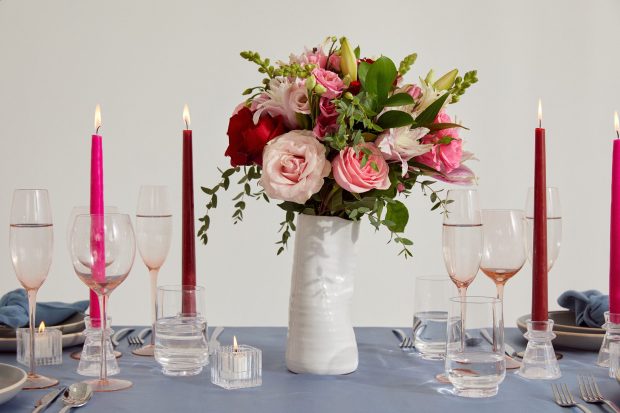Gen Z Demand, Huge Bouquet Bundles Will Offset Valentine’s Day Headwinds

In keeping with the well-worn business adage that “this is not your father’s Oldsmobile,” it turns out that when it comes to giving flowers on Valentine’s Day — or other occasions — the discerning and different tastes of young consumers also don’t want to be buying their father’s bouquet.
“In terms of Gen Z, it’s our fastest growing segment,” online florist UrbanStems CEO Seth Goldman told PYMNTS, calling the nearly 50% increase in buying from the 20-something set “a bit of a surprise.”
While that demographic had not previously been a focus for the company, Goldman said the opportunity to get new customers involved with updated versions of age-old traditions is a great opportunity.
“We’re very excited to bring that customer base on board because they will continue to grow, get older and have more special events and occasions” for years and years to come, and the company has gone to great lengths to differentiate itself from larger, older rivals.
That can come in the form of refreshed floral designs and an updated eCommerce experience, as well as via commitment to sustainability that appeals to the Gen Z social sensibilities that have run cool toward an imported product, with a short shelf life that’s often produced by cheap foreign farm workers in South America.
“In terms of sustainability, we focus a lot with Rainforest Alliance certified farms,” Goldman said, “and that’s both a certification on the environmental side of things as well as on the labor side of things,” noting that most of its flowers come from Ecuador and Colombia.
Attracting younger, hipper consumers has also been part of the business plan in taking on much larger competitors such as 1-800FLOWERS, with personalized assortments and building its designs to be in concert with its supply chain. It’s what Goldman described as “very cool, young and modern.”
The Super Bowl of Flowers
While Valentine’s Day is the biggest single day occasion for most florists, for UrbanStems it is actually ranked second behind Mother’s Day, as well as the cumulative flower consumption of birthdays all year long.
The fact that it falls on a Monday this year is not expected to slow things down one bit, as the National Retail Federation has predicted Valentine’s Day spending will reach almost $24 billion, an increase of roughly 10% from last year, driven by average per person spending of $175 for those who do chose to celebrate — including 37% of consumers who are projected to buy flowers.
Goldman said Mondays do play a role with the bottom line for florists because many customers usually don’t think about Valentine’s Day until the week that it’s in.
“So for those customers,” he said, “it’s going to be a very late arrival to the party. I think you’re also going to be doing some advertising on Sunday to compete with the Super Bowl. That’s less of a consideration for us. We’re aiming to be good at that point. But for anyone who’s taken a lot of orders on Monday or Sunday for Monday, there’s some question about how the sales are going to be flowing given that the Super Bowl is right before it.”
Nipping Inflation in the Bud
To be sure, florists are not exempt from contemporary business woes such as logistical problems, labor shortages and inflation.
Despite these obstacles, UrbanStems, which delivers bouquets in the lower 48 states, still expects its share of the market to continue growing with a rising base of younger customers.
While Goldman commended the ability of the company’s growers to navigate logistical challenges over the past two years, he said UrbanStems has had trouble recruiting truck drivers domestically, which is driving up costs. However, last-mile delivery personnel in places such as New York and Washington have remained on the job.
“We are doing OK there,” Goldman said. “We’ve had long-standing relationships with our couriers in New York and D.C. which are the two areas where we do last mile hand delivery,” he added.
Goldman said UrbanStems has been “thoughtful and careful” about passing any extra costs to customers. While a dozen roses will go for about $80, which he says is pretty close to last year’s price, it has been a struggle to keep costs down with other parts of the bouquet. For instance, the company saw a cost increase with a packaging vendor even though it increased its volume with them by more than 200%.
“Nearly half of packaging costs can be logistics and distribution related and those costs,” Goldman said. “It’s across the board anywhere you look, you see that they’re getting an increase in costs. I think the question is, where do we pass it on to the consumer, where do they understand, where do they not understand or simply not care? So we’ve been thoughtful and careful about where to do it.”
For example, Goldman said one way his company has been able to mask inflation is through bundling bouquets at a discounted price.
“We introduced what we call triples, which are bouquets that are three times the size of a normal bouquet and that bouquet will come in north of $100,” he said, noting the opportunity to upsell customers but make them feel like they’ve still gotten a great deal.
